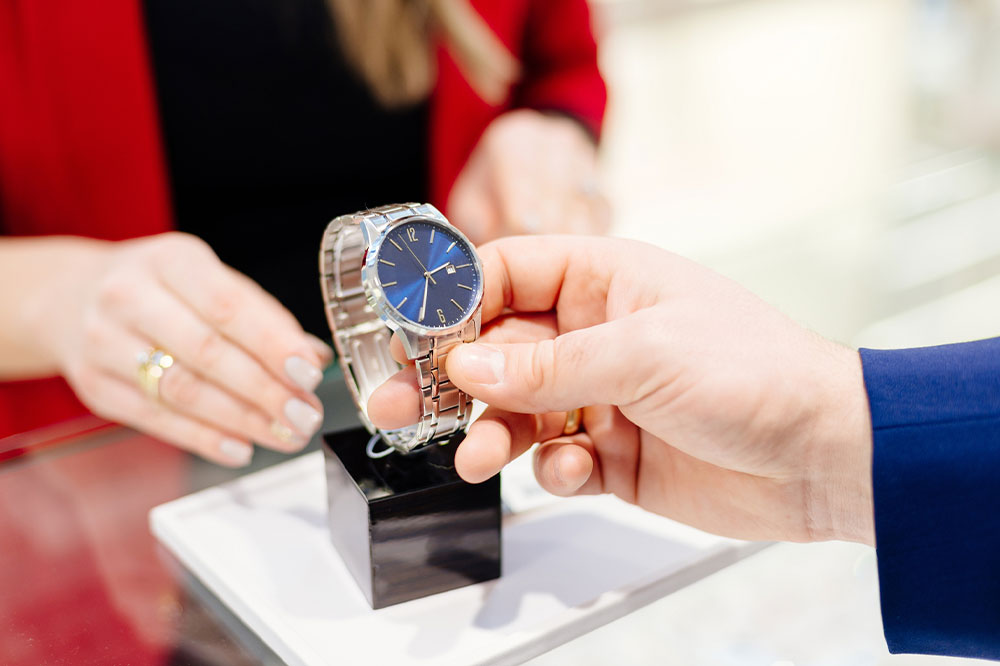
7 blunders to avoid when buying a watch
Buying a watch today can be a tall task. After all, buyers have endless options and several positive and negative opinions to consider before putting down their money. People tend to choose a watch based on brand preference, product popularity, experience, technical specifications, aesthetics, and other parameters. But despite a long list of considerations, certain mistakes can prevent one from getting the best watch. Here are some of those common mistakes to note:
Underestimating warranty
New watches, like most other products, can malfunction or come apart just a few days after purchase. Watches made by even the most credible organization can go wrong, leaving buyers disappointed. To safeguard themselves against that, buyers should ensure that they pay a little extra upfront for a warranty while buying a timepiece. Overlooking warranties is one of the major watch-buying mistakes people often make.
A warranty acts as a surefire way to get the most out of every purchase. Nowadays, nearly all online and offline sellers provide warranties and guarantees with their products, so one needs to choose the product that offers the best warranty coverage in terms of years and price.
Getting swayed by the seller’s opinion
Watch sellers have specific sales targets every year to meet. So, they will obviously tell customers only the good aspects of a watch while concealing all the minus points of the same product. That’s usually not an issue, as upselling is a part of their profession, but buyers should not be overtly influenced by their opinions. Getting one’s opinions changed or influenced by sellers is another incredibly common watch-buying mistake. While purchasing a watch, one should be forthright and verify every feature and USP of a product. At the same time, one can be polite and yet refuse to be coaxed into an agreement by a seller.
Not trying on the watch before buying
Comfort is a key and often overlooked aspect of watches. People forget that they will spend hours, or sometimes days wearing a wristwatch. So, purchasing a bulky piece that feels heavy and cumbersome can be a bad choice. Wearing such a watch for, say, eight hours, will get tiresome after a while for users.
Trying on a watch helps buyers gauge the fit and adjustments of the watch. More importantly, it enables them to know whether it would be comfortable and nifty to use or not.
Blindly following ads and trends
Today, brands have the data and knowledge regarding each customer’s pain points and requirements. Based on that, they can design their marketing campaigns and ads in such a way that all their products seem like a perfect fit for every customer. Catchy ads and social media marketing campaigns tend to influence a lot of buyers today.
As suggested earlier, popularity is a key aspect of buying watches today. People check out specific listicles and trends online before buying a watch. However, both of these are among the biggest watch-buying mistakes customers make regularly. One must purchase a watch based on their requirements and past usage experience with the brand, and not marketing gimmicks or purchase trends.
Disregarding smaller, lesser-known brands
Ultimately, a watch needs to tick a few boxes – it should tell the time, be clear to read under any kind of lighting, and sound alarms/reminders without issues. On top of that, one can check out the product’s special features and fancy tricks when they are buying a wristwatch.
Big brands definitely have a reputation and quality assurance attached to their products. For example, brands like Breitling are known for their timeless appeal and top-notch quality. It is also easy to buy products from such large brands (One can buy official Breitling and other authentic high-end watches from online and offline stores). Nonetheless, buyers should not ignore the smaller manufacturers while checking the market. It is not unusual for such brands to make amazing watches loaded with features. What’s more, such watches are priced reasonably too, making them brilliant value options for customers.
Equating price with quality
This point mirrors the previous one; the brand name and prices are not reflective of a watch’s capabilities and reliability. Buyers can get an understanding of a watch’s true quality by trying it on and even checking its online customer reviews on eCommerce sites.
One must remember, the pricier a watch is, the more money they will lose if it stops working a few days after they have bought it, especially if it is not a reputed brand.
Not checking the watch band
Watches generally come with either a leather band, a metal one, a plastic one, or a rubber one. Each material has its pros and cons. For instance, leather tends to wear out gradually if the watch is used without care. Metal band watches can get heavy to use after a while, and plastic/rubber band watches tend to have a more sporty look rather than a formal one. One needs to factor in these aspects before putting their money on a watch.